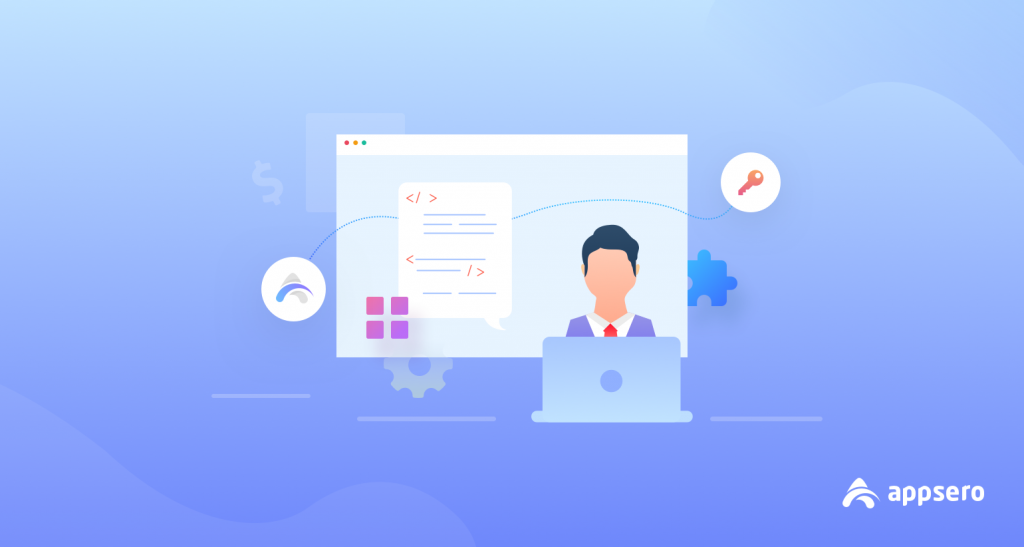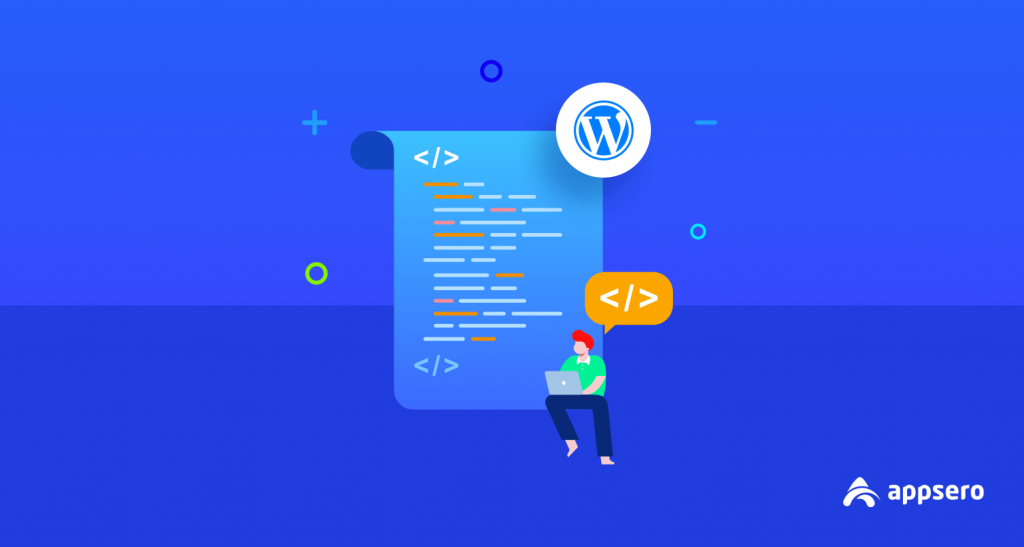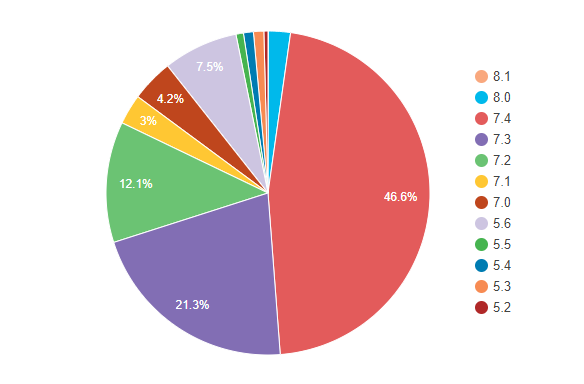
10 Common Mistakes to Avoid While Developing WordPress Plugins and Themes
All your effort and time will go in vain if users face technical issues while using your WordPress products. Conducting multiple trials and errors is an internal part of the development process. Still, you as a developer can hardly avoid mistakes altogether.
Even experienced developers often commit mistakes during product creation. In this article, we’ve gathered the most common mistakes in WordPress plugin and theme development and how to fix them.
Before moving to the main discussion, let’s have a quick look at how the WordPress product market has been growing and reshaping the web publishing experience.
The Evolution of WordPress Plugins and Themes
In 2003, Matt Mullenweg and Mike Little came up with WordPress, which is actually the successor of b2 Catalog. They announced the initial version (0.7) of the web publishing tool and included advanced functionalities like texturized engine, XHTML 1.1 compliant templates, a new admin interface, and more.
The founders introduced WordPress plugins in 2004 for the first time through Version 1.2 (Mingus) And, in 2005, they introduced themes through Version 1.5 (Strayhorn). Since then, WordPress has transformed into the most used content management system.
There are over 540 million active plugins installed into the WordPress ecosystem as of now. And the market accumulates into a whopping $1B+ market size only for plugins. And the size of theme development market is about $50 million.
Freemius
WordPress currently has 59,760 plugins and 9,100 themes listed on WordPress.org.
The immense popularity of WordPress products influences more and more people to build their careers in this field. This is why web development is one of the most demanding professions in today’s job market. In this competitive field, you have the least chance to do any mistake indeed. So, before anyone else snatch your job learn how to get rid of these WordPress plugin and theme development mistakes.
10 Common Mistakes in WordPress Development- both Plugins and Themes

Ensure that your themes and plugins are working fine before deploying them for public use across the WordPress ecosystem. Each tool must pass through several trials and errors to finally be available at the users’ disposal.
Sometimes, even experienced developers focus more on finding quick solutions. Consequently, they commit silly mistakes that matter seriously. Yes, it’s pretty difficult to go 100% error-free, but you can easily avoid some common mistakes most developers make. Check the following list of WordPress plugin and theme development mistakes & how to fix them-
1. Keeping the Debug Mode off
WordPress keeps the WP_DEBUG mode inactivated by default. Setting it to ‘false‘ is required in live environments to avoid PHP notices and printing errors. When turned off, WP_DEBUG helps in hiding scripts and private server paths from the public view; this keeps a site more secure.
But, during the development stage, we recommend you set it to ‘true‘. When turned on, it notifies the developers if there’s an error in the code. It forces developers to write better codes even if the error doesn’t affect the plugin or theme gravely. It also prevents PHP errors from occurring during WordPress installations. You can enable WP_DEBUG by following the below lines.
define( 'WP_DEBUG', true );
define( 'WP_DEBUG_LOG', true )
Once the development process is complete, disable it again by setting it to 'false‘.
2. Using Too Common Names
The plugin and theme market is expanding each day. The chances are high that your name may match an existing plugin’s/theme’s name. It would be best to choose a unique name to avoid code conflicts. It’s better to add specific prefixes before variables and functions names. These unique names also help users find a particular plugin among other active plugins.
You can also use PHP namespaces to enclose necessary items following PHP coding standards, as shown in the WordPress coding standards handbook. Namespaces help developers create separate segments to group classes, variables, and functions.
3. Ignoring the Risk of SQL Injection

SQL injection exposes a website’s vulnerability to hackers. They get access to the valuable and secret information stored in the database. Hackers can easily extract information from the database by embedding commands into HTTP requests. A good number of developers mistakenly forget to protect their plugins and themes from outside attacks.
You can easily mitigate the risk of SQL injection by using the WordPress core prepare() function. WordPress experts recommend that developers avoid using parameters received from user inputs AS IS when dealing with SQL queries. Hopefully, these two methods can help you prevent SQL injection successfully.
4. Not Using WordPress Nonces
Most developers emphasize the functionality of the plugins and themes and often ignore other safety aspects of these tools. You can utilize WordPress nonces in your code as a safety measure, especially when developing themes.
WordPress generates one-time use security tokens that can be used to verify users’ intentions while performing an action. Nonces prevents misuses of URLs and forms using these security tokens. Every user has a unique nonce as an identification feature. You can use nonces to protect your themes against Cross-Site Request Forgery(CSRF).
5. Not Aligning with Official WordPress Guidelines
Since WordPress plugins and themes are meant to work smoothly within the WordPress ecosystem, it’s wise to follow official guidelines minutely. Most importantly, you need to comply with the rules set by WordPress.org to submit a plugin or theme and get approved by the authority.
The review team will send you feedback mentioning the issues (if any). You need to fix the errors and resubmit the code. WordPress authority will reject your submission if they find your intention suspicious. Even the review team may ban you from the WordPress repository if they think your plugin or theme carries anything malicious.
You must strictly adhere to WordPress’s official guidelines to get acceptance as a plugin or theme developer. WordPress follows hard and fast rules in this regard because approving a plugin or theme means it is accessible to all users around the world. Errors in the code or evil intentions of the developers can affect a large part of the global WordPress community.
6. Prioritizing Quick Solutions Over Quality

Developers are always on tight deadlines. The challenge of finding effective solutions within a short time persuades them to use shortcuts. As a result, the quality of their work drops significantly. This is one of the most common WordPress plugin and theme development mistakes.
There’s no fast and easy method of developing a highly functional and useful plugin or theme. Good products require intensive research, adequate background work, and clean coding. It’s better to follow the best coding practices even if you’re developing a small theme or plugin.
Often developers reach out to the internet to find solutions. StackOverflow is the most popular place that helps developers who get stuck in the middle of a development process. It’s okay to follow such resources for idea generation. But, don’t copy the code snippets without understanding the logic behind that code.
Make sure you align or adjust the code with the type and functionality of your theme or plugin and use a code that is licensed to reuse. Don’t copy and paste codes to save time. Instead, focus on improving the quality of your products.
7. Enqueuing Unnecessary CSS and JavaScript Files
Too many HTTP requests delay the page loading time of a website. This harms the SEO health of the website and affects search engine rankings to a great extent. Besides, it may result in javaScript errors because of conflict between active plugins.
For instance, if you have two plugins that use the same jQuery library, it may load twice and cause issues. Every enqueued file sends an additional HTTP request and takes longer to load the linked webpage. So, put extra effort into filtering out unnecessary JavaScript and CSS files. Keep the themes and plugins as lightweight as possible with clutter-free CSS and JavaScript files.
Read More: How To Add CSS Code Snippets In Your Elementor Design.
8. Not Making Use of WordPress Core Functionality
WordPress already has a massive library of core files like jQuery, Color Pickers, and more. Some themes and plugins come with files that are already available in WordPress core files. This is a bad practice since creating new files adds to the final package size and enhances the loading time. On top of that, you have to update them regularly to ensure the best user experience.
As a developer, you should use WordPress core functionality to its fullest potential. Utilizing the resources WordPress has will save your development time and help create more lightweight, functional, and fast responsive plugins and themes.
Keep in mind that the old code base gets out of order sometimes. You need to have the latest version of WordPress to access all the new features equipped with secure and improved codes.
9. Not Coping up with the Latest Technology
No matter how effective and functional your plugins and themes are, users can’t reap the benefits of your products if they lack compatibility. The best practice is to write codes that are compatible with the latest technology. But, this also creates an inevitable adverse situation.

Let me explain the scenario. Suppose your code works perfectly fine only with PHP 7 and above. A portion of your target customers who don’t have the required PHP version will fail to use your inventions. Similarly, the incompatibility of your code and the WordPress version your users have can create issues and cause you to lose more customers.
When it’s recommended to use the latest technology, at the same time, you must consider your target audience. If most of them use an older version of PHP and WordPress, you have to write codes that are compatible with those versions.
10. Failing to Manage License Keys Properly
As a theme or plugin developer, you surely have plans to monetize your creations. You can earn substantial money for the time and effort spent during the development process. Proper software licensing can prevent your works from being pirated. Failing to manage licenses is another crucial WordPress plugin and theme development mistake that developers sometimes overlook.
You can easily use a WordPress license manager to provide valid and active license keys for your WordPress products. Make sure you have a license management tool compatible with the WordPress version, PHP version, and language preference of your customers.
We’ve also made a short video on this topic to save your time and help you understand the key points easily. Watch the following video and subscribe to the Appsero YouTube channel for more videos.
How to Avoid Common Mistakes in WordPress Development: The Key Takeaways
Hope now you know about common WordPress plugin and theme development mistakes. This section is for you if you want to have a recap of what you’ve read throughout this whole article. Here, we’ve summed up the gist of this article in a bite-sized bulleted list-
- Turn the DEBUG mode on during the development process
- Use unique names and prefixes to avoid code conflicts
- Carefully take precautions to avoid SQL injections and other malicious attacks
- Utilize WordPress nonces to secure URLs and forms
- Comply with official WordPress guidelines to get quick approval
- Avoid looking for quick solutions compromising the product quality
- Write clutter-free codes, enqueuing only necessary JavaScript and CSS files
- Develop a clear understanding of WordPress core functionality and use it
- Focus on both latest technology and code compatibility
- Manage the license keys for your WordPress products with the right tool
To build a successful developer career you must have knowledge about these WordPress plugin and theme development mistakes and the optimal way to solve them.
Avoid Common Mistakes in WordPress Development & Establish a Successful Developer Career
Apart from the mistakes we mentioned here, developers commonly make a few more WordPress plugins and theme development. Failure to track changes in codes and resistance to improvement are notable among them.
You can use GitHub as a code hosting platform for version control and collaboration. It helps developers track changes in code bases across multiple versions. And try your best to develop a growth mindset.
Technology is evolving; you also need to improve your plugin and development for the better. Embrace new technology and avoid these common WordPress plugin and theme development mistakes. We hope you can build state-of-the-art plugins and themes by following this guide.
Subscribe To Our Newsletter
Don’t miss any updates of our new templates and extensions
and all the astonishing offers we bring for you.








I went through your article which was on PHP development. When developing PHP applications, there are several common mistakes that developers should be aware of and try to avoid. Here are some of the most important ones:
1.Lack of input validation and sanitization
2.Not using parameterized queries
3.Poor error handling
4.Not escaping output
5.Inefficient database queries
6.Insecure session management
7.Not using proper encryption
8.Neglecting code organization and structure
These are some points which I wanted to include in your article. Readers, If you want to develop your PHP website, you can visit an IT company like Alakmalak technologies. They have 17+ years of experience in this field.